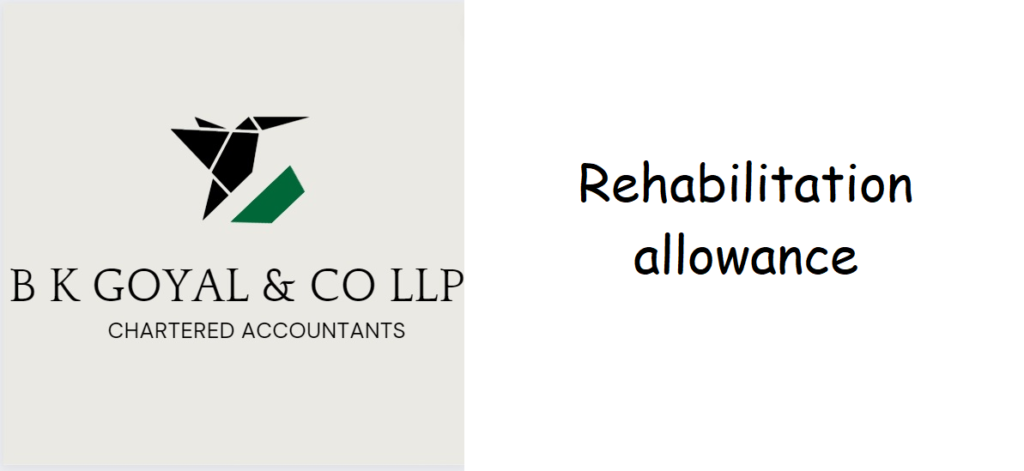Section 33B, of Income Tax Act, 1961 states that
Where the business of any industrial undertaking carried on in India is discontinued in any previous year by reason of extensive damage to, or destruction of, any building, machinery, plant or furniture owned by the assessee and used for the purposes of such business as a direct result of—
(i) flood, typhoon, hurricane, cyclone, earthquake or other convulsion of nature ; or
(ii) riot or civil disturbance ; or
(iii) accidental fire or explosion ; or
(iv) action by an enemy or action taken in combating an enemy (whether with or without a declaration of war),
and, thereafter, at any time before the expiry of three years from the end of such previous year, the business is re-established, reconstructed or revived by the assessee, he shall, in respect of the previous year in which the business is so re-established, reconstructed or revived, be allowed a deduction of a sum by way of rehabilitation allowance equivalent to sixty per cent of the amount of the deduction allowable to him under clause (iii) of sub-section (1) of section 32 in respect of the building, machinery, plant or furniture so damaged or destroyed :
Provided that no deduction under this section shall be allowed in relation to the assessment year commencing on the 1st day of April, 1985, or any subsequent assessment year.
Explanation.—In this section, “industrial undertaking” means any undertaking which is mainly engaged in the business of generation or distribution of electricity or any other form of power or in the construction of ships or in the manufacture or processing of goods or in mining.
section 33B of Income Tax Act, 1961
Are you looking to understand about Rehabilitation allowance ?
This detailed article will tell you all about Rehabilitation allowance.
Hi, my name is Shruti Goyal, I have been working in the field of Income Tax since 2011. I have a vast experience of filing income tax returns, accounting, tax advisory, tax consultancy, income tax provisions and tax planning.
The allowance for rehabilitation is a benefit accessible to Indian companies through Section 33B of the Income Tax Act, 1961. This benefit is designed to aid companies in restoring and revitalizing their business by providing financial support. This benefit is particularly useful for companies that face obstacles as a result of unforeseen events, economic slumps, or technological advancements. The purpose of this benefit is to help companies recover and make contributions to the growth of the economy.
To be eligible for the rehabilitation allowance, companies must fulfill specific criteria as stated in Section 33B. Firstly, the company must be engaged in the production or manufacturing of goods. Secondly, the company must have incurred expenses related to rehabilitating their business. Finally, the company must have acquired the necessary authorizations and approvals from the relevant authorities for the rehabilitation project.
Companies can claim up to 30% of the expenses incurred for rehabilitating their business. Expenses that qualify for this allowance include the acquisition of new plant and machinery, installation of new technology, renovation of buildings, and any other costs directly related to the rehabilitation of the business.
It is important to note that only companies can apply for the rehabilitation allowance, and it is not available to individuals or partnerships. Furthermore, the allowance cannot be claimed for any expenses that are capital in nature. There are also certain conditions and limitations that apply to this allowance, and companies must comply with them to avoid disqualification of the claim.
In summary, the rehabilitation allowance is a valuable provision that helps struggling companies and encourages them to invest in the rehabilitation of their business. It provides a tax benefit to companies and promotes economic growth. Companies must adhere to all the conditions outlined in Section 33B to claim the rehabilitation allowance.

